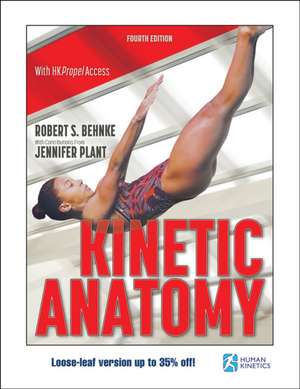Kinetic Anatomy
Autor Robert S. Behnke, Jennifer Planten Limba Engleză Foi volante – 5 iul 2021
- Anatomy labeling and coloring sheets offer students nearly 100 interactive activities that test their knowledge of anatomical structures and function.
- Learning activities; true-false, multiple-choice, and fill-in-the-blank questions; and functional movement exercises ensure students have a firm grasp of key points from each chapter. Instructors will be able to monitor which activities have been accessed by students.
Preț: 585.59 lei
Preț vechi: 616.40 lei
-5% Nou
Puncte Express: 878
Preț estimativ în valută:
112.06€ • 115.78$ • 93.22£
112.06€ • 115.78$ • 93.22£
Carte disponibilă
Livrare economică 26 februarie-12 martie
Preluare comenzi: 021 569.72.76
Specificații
ISBN-13: 9781718208667
ISBN-10: 1718208669
Pagini: 304
Dimensiuni: 279 x 221 x 20 mm
Greutate: 0.84 kg
Ediția:Fourth Edition
Editura: HUMAN KINETICS
ISBN-10: 1718208669
Pagini: 304
Dimensiuni: 279 x 221 x 20 mm
Greutate: 0.84 kg
Ediția:Fourth Edition
Editura: HUMAN KINETICS
Descriere
Kinetic Anatomy, Fourth Edition, is ideal for learning structural anatomy and how it affects human movement. The text systematically assembles each component of the human body, including bones, joints, muscles, nerves, and blood vessels.
